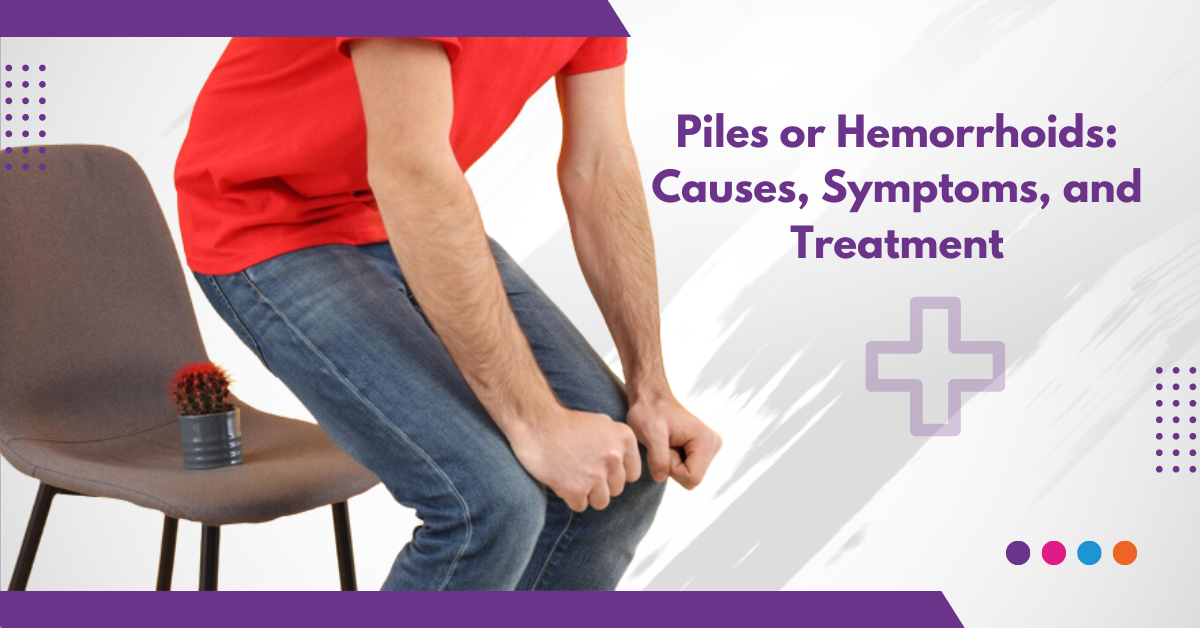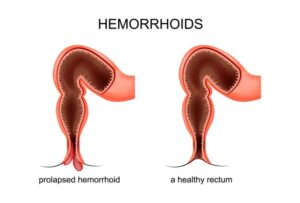Piles are the result of swollen veins in the lower anus and rectum. They can cause tissue growths in and around the anus and can lead to significant discomfort. These growths can vary in size and location. It can be internal, external and Intreno-external.
- Internal – above the dentate line, covered with mucous membrane.
- External – below the dentate line, covered with skin.
- Intreno-external – together occurs.
On basis of four point scale,
- First degree- Piles within that may bleed but does not come out.
- Second degree- Piles that prolapse during defecation, but returns back spontaneously.
- Third degree- Piles prolapsed during defecation, can be replaced back only by manual help.
- Fourth degree- Piles that are permanently prolapsed.
Piles result from increased pressure in the lower rectum. The blood vessels around the anus and the rectum will stretch under pressure and may swell or bulge forming piles. This may be due to,
- Chronic constipation
- Chronic diarrhea
- Lifting heavy weights
- Straining when passing stools
- Pregnancy
- Low fiber diet
CLINICAL FEATURES
- Incidence is equal in both sexes
- Bleeding- splash in the pan ( bright red & fresh) during defecation
- Mass per anum
- Mucoid discharge
- Pruritis
- Pain
- Anaemia
- Strangulated hemorrhoid in which anal muscles cut off blood supply to the hemorrhoid.
DIET
- Avoid bitter, sour, milk and ghee products and eggs etc…
- Take more fiber diet
- Include panner poo thenooral, kottai thiratchai
- Drink plenty of water to avoid constipation
- Avoid regular use of laxatives
- Too much coffee and alcohol
- Avoid prolonged sitting
- Include more Whole refined grains in daily diet.
EXERCISES
Good digestive health and regular bowel movements helps to prevent hemorrhoids. Regular exercises can also help to improve digestive health and encourage regular bowel mo0vements.
There are some exercises can help to treat and prevent hemorrhoids,
- Pelvic floor contraction
- Deep breathing ( Pranayama)
- Balasana ( child pose)
- Viparita karani ( legs up the wall pose)
- Pawanamuktasana ( wind relieving pose )
- Baddha konasana ( bound angle pose)
- Malasana ( Garland pose)



